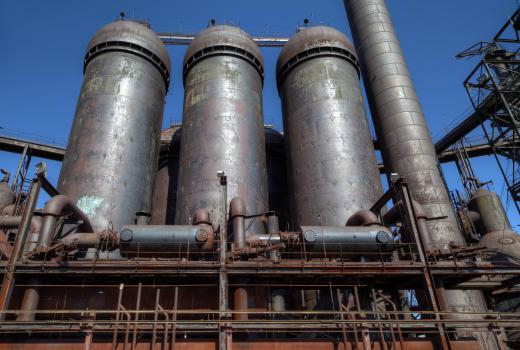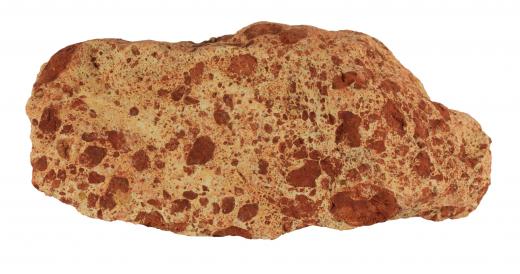Smelting is a process for extracting usable ore from mixed deposits where people find ore bound with other metals, rock, and extraneous material. It is very unusual to find deposits of pure ore and this method allows people to separate out useful metals. The invention of this process was an important step in the development of human societies, allowing people to make more complex metal products and alloys.
In the smelting process, people heat the material with an agent to trigger a chemical reaction. Although people often refer to smelting as another form of melting, simply melting material is not enough. The chemical reaction is necessary to force the desired ore to precipitate out, and it may be helpful to add a flux to bind with particulate materials, forming slag, a mass of unwanted material that will settle to the bottom of the furnace where people do their smelting.

As the ore precipitates out and gathers together, density changes in the composition of the material will cause it to form layers, allowing the operator to skim off the desirable ore. After the smelting is complete, people can take out the byproducts and discard them, although sometimes there are uses for them, such as combining them in aggregate concrete mixtures. The yield from a given smelting run varies, depending on the quality of the base product and what kind of ore people are attempting to extract.

People need to control the conditions carefully while smelting. The heat must be appropriate to the ore and the furnace requires good air circulation to fully heat all of the material, avoiding situations where it forms masses and does not have a chance to react chemically while in the furnace. People also need a nonreactive furnace lining and must be careful with certain substances because they can produce toxic fumes and may make people sick.
Industrial metals production relies on a number of processes to get usable ore out of deposits. It can be a painstaking procedure. Companies weigh the value of the ore they are extracting against the costs of extraction to determine if smelting is an efficient and appropriate processing method. In some cases, ore may be left alone because it would cost too much money to extract, even if it is valuable. People in the area around a metal mine may notice discarded waste material with traces of the metal that would be too expensive to recover inside.
Ever since she began contributing to the site several years ago, Mary has embraced the exciting challenge of being a About Mechanics researcher and writer. Mary has a liberal arts degree from Goddard College and spends her free time reading, cooking, and exploring the great outdoors.

